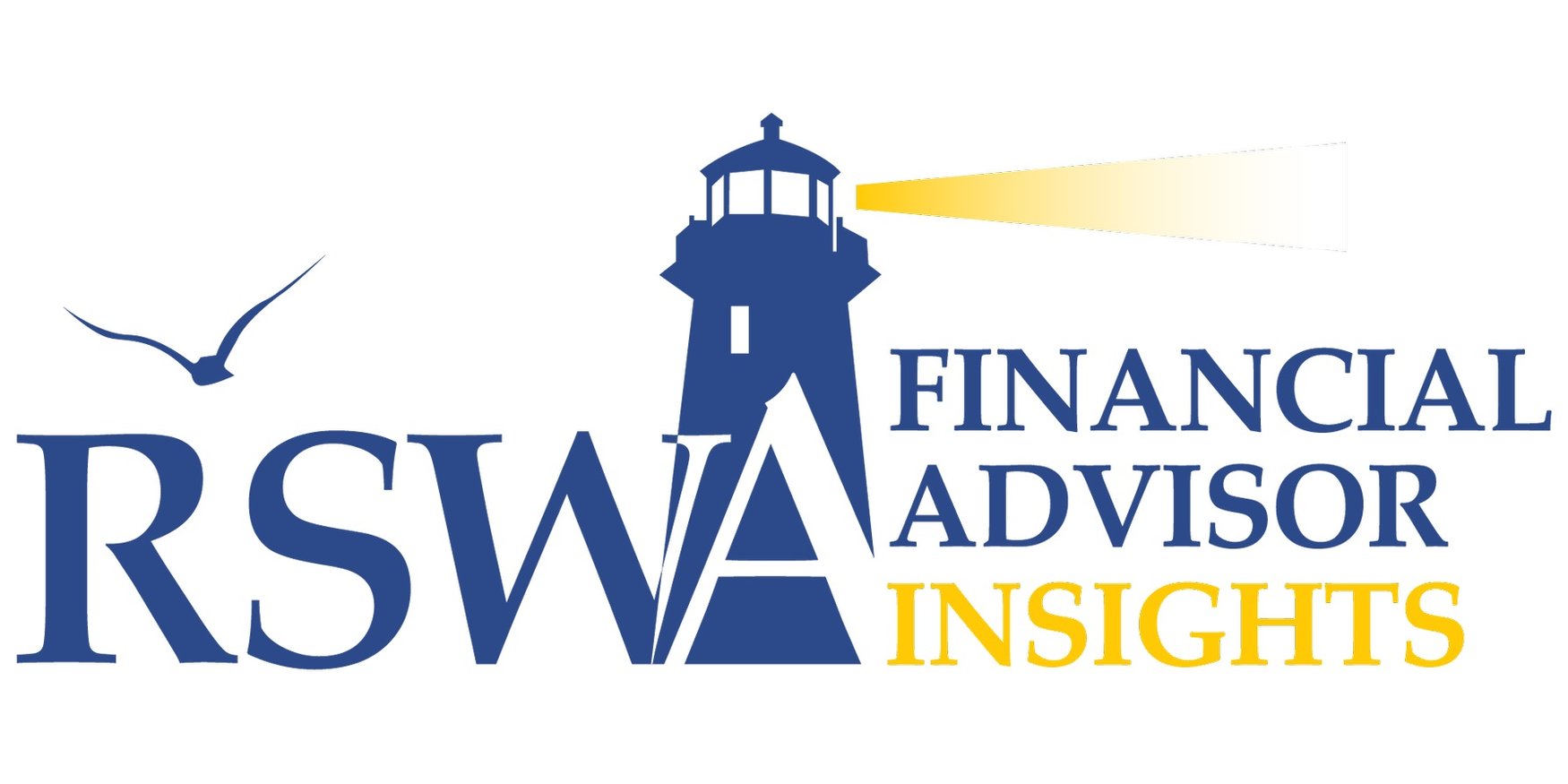The secret to retiring comfortably?
There is none.
But a well thought out plan along with some discipline will increase your chances for success.
Many people put off planning for retirement until it’s too late. Busy with the demands of everyday life, putting together and managing a plan for retirement often takes a backseat. In this guide, we summarize the key components of how to begin preparing for retirement.
After reading the guide, we hope you will feel much more confident in the retirement planning process and know what steps to take to move forward.
This guide will cover:
| What you should focus on now if you're | Detailed strategies for a good retirement plan | Social Security & Medicare |

20 Years Away (Or More)
- Create a habit of saving automatically in both good and bad financial times. This saving "muscle" is one you want to build throughout your life – to the point that you won't feel right if you're not saving.
- Save as much money as you comfortably can (and possibly a little more than what's comfortable).
- Establish an emergency cash account – so you don't raid retirement assets when something comes up (and something always comes up!).
- Pay off credit card, student loan, or any other non-mortgage debt.
- Put saving for your retirement ahead of saving for college expenses for your kids.
- Learn about and understand your risk tolerance and implement a long-term investment strategy.
- Take full advantage of any company retirement plans and employer contributions.
- If all of this seems daunting, find a financial advisor who understands your goals and challenges and will work with you to develop a strategy and get you on track.
10 Years Away
- Continue to “flex that saving muscle” and ramp up your retirement savings now that the kids are out of college and (hopefully!) out on their own.
- Begin seriously thinking about what you want to do in retirement and where you want to live.
- Begin to establish firm retirement goals and align your investment strategy with those goals.
- Assess your current budget and how it might change in retirement.
- Think about what you’ll do for healthcare during retirement, especially if you plan to retire before you’re Medicare-eligible at age 65. You’ll likely need to purchase private insurance.
- Consider and evaluate purchasing a long-term care insurance policy.
- Obtain an estimate of your Social Security benefits.
- Obtain an estimate of your pension plan (if applicable).
5 Years Away
- Actively revisit the points from the "10 Year Mark". Have any of your goals changed?
- Determine if you need to fill in any savings gaps or reevaluate your retirement age.
- Continue to get better clarity about your retirement income and expenses.
- Consider paying off your mortgage (if you haven't done so already).
1 Year Away
- Make sure everything on the list from the "5 Year Mark" is covered.
- Evaluate exit date options from your employer. Many times, you will qualify for year-end bonuses, stock options, or profit-sharing for working only part of a year. You don't want to leave a big bonus on the table because you left two weeks early. Work with HR to understand all cut-off and eligibility dates.
- Know your plan for health care coverage whether it’s Medicare, private insurance, or something else.
- Decide when you will begin collecting Social Security and/or a pension.
- Estimate income from any part-time or consulting work.
- Estimate any Required Minimum Distributions (RMDs) from your retirement accounts (depending on your age).
- Put together a tax-sensitive plan for your first two-years of cash flow. This will help protect you if investment returns are poor when you start retirement because you won't have to sell investments when they are down. Having cash set aside to cover a couple years of living expenses will allow time for your investments to recover in the event of a downturn, giving you a better chance at long-term success.
If You’re Already Retired
- Once you achieve retirement, you should already have a personalized financial life plan in place. It’s important that this plan is reviewed and updated annually to ensure you stay on track and don’t outlive your money.
- The goal: Enjoy it!!! You have spent many decades preparing for retirement. You hopefully feel confident and optimistic about the future, so go out and enjoy the fruits of your labor!

Clarify Your Retirement Goals
Take some time to begin thinking about your ideal retirement (preferably with your spouse if you’re married) and write down the answers to the following questions:
- When do you want to retire? In 10 years? 20 years?
- Where do you want to live?
- How long will your retirement last? We know, it's a strange question to try and answer how long you'll live, but it's important to know how long your money needs to last.
- What do you want to do during your retirement? Start a second business, travel, get involved in philanthropy, or work with non-profit organizations?
- Do you want to leave a legacy behind? Giving to others is wonderful but requires special planning.
These questions are not always easy to answer, but they lay the groundwork for your retirement plan. Once you know your goals, you can begin estimating expenses, identifying sources of income, and constructing a savings plan.
Accurately Estimate Expenses
Once you’ve identified your goals, you’re ready to begin looking at how much money they will require. Most savings goals will fall into 3 distinct categories: Living expenses, personal goals, and healthcare expenses. Let's review what you'll need to evaluate for each category:
Living Expenses:
How much does it cost for you to live? Which of your current expenses will continue into your retirement? Food, utilities, property taxes, insurance, and other basic expenses must all be carefully considered. Most people tend to underestimate how much money they will require. Depending on your financial situation and projected timeline, you may decide to downsize or move to a more affordable location. The bottom-line: Do your research and don't be afraid to weigh a few different scenarios.
Personal Goals:
What do you want to do in retirement? While some individuals have life-long dreams they "can't wait" to tackle during retirement, many aren't really sure what they want to do. Take more vacations? Become more active in a hobby? Ride that bike that's been sitting in the garage? While you may or may not know exactly what you want to do, it's important to begin thinking about it. Obviously, funding a start-up company may require more money than vacationing in Mexico once a year.
Healthcare Expenses:
Planning for your healthcare in retirement is one of your most important considerations since costs are rising faster than inflation. How will your healthcare costs change post-retirement? Will your company health care plan cover you in early retirement? What should you estimate for out of pocket costs not covered by Medicare and supplemental insurances? Should you have long-term care insurance or self-insure? How much should you ultimately put aside for healthcare costs? A trusted advisor can help you.
While a simple Google search will yield many online retirement expense calculators that can give you a rough idea of how much money you will need, it’s not always clear what they include in their estimates or how accurate they are.
Accurately estimating your expenses is one of the most important factors in determining a successful retirement. Do your calculations diligently, and, if needed, seek out an experienced advisor for help.
Maximize Your Retirement Savings

Your savings are "the bread and butter" of your retirement plan. They are what provide you with the cash necessary to make investments in the first place, and what will eventually supply your income throughout retirement. While Social Security is great, it is assumed to replace just 40% of your pre-retirement income.
The dizzying number of books, blogs, and apps continually being released on the topic of savings make it seem like rocket science, but it's really quite simple. Saving is spending less than you make, or in other words, living beneath your means. And the longer you save, the more you'll have. And the more you have, the more options you'll have later. With that said, everyone should be taking advantage of their company's retirement plan and matching contributions (if available).
If you are a business owner, there are special savings plans that you should consider. These include pension plans, cash balance plans, SEP-IRAs, Individual 401(k)s, and SIMPLE IRAs. Each plan has unique characteristics, savings options, and challenges and some can be highly complex. Do your research or partner with a financial advisor who can walk you through the options and introduce you to the appropriate professionals for information and to formulate a plan.
Commit To A Long-Term, Sensible Investment Approach
 There are a lot of different risks to consider when investing, but two of the big ones are volatility and inflation. People often say, “I don’t want to risk money in the markets,” without realizing you take a risk by NOT being invested in the markets – since stock markets have historically proven to grow faster than inflation over time.
There are a lot of different risks to consider when investing, but two of the big ones are volatility and inflation. People often say, “I don’t want to risk money in the markets,” without realizing you take a risk by NOT being invested in the markets – since stock markets have historically proven to grow faster than inflation over time.
For reaching long-term goals, the potential benefits of smartly investing in the long-term growth of stocks outweigh the potential pitfalls. Keep your money in cash and you'll avoid volatility risks but lose purchasing power over time. Historically, money sitting in a bank account has not kept up with inflation.
Conversely, keep too much in high-risk/high-return stocks and you might not be able to sleep at night! So, what investors need to do is plan for all risks and balance them out to align with their goals and tolerance. Good investing can often be very boring. Many investors will feel the need to "do something" when things get dicey as opposed to staying the course. They react too much to current events, chase unrealistic returns, all the while ignoring long-term data.
It’s not uncommon for investors to chase “hot returns” despite contrary evidence that it works. Trying to beat the market with stock picks is a difficult feat, even for the pros, and it rarely ends up in the stock picker's favor. There’s just too much data against the practice to justify gambling your future retirement. Therefore, we recommend a pragmatic sensible investment approach:
- Keep expenses low
- Understand your risk tolerance and select an appropriate asset allocation
- Ignore the fads or breaking news and focus on the long-term
- Stay diversified to lessen risks of over-exposure to a handful of stocks, sectors or countries
- Make tax-efficient decisions
- Regularly monitor and rebalance your portfolio to stay on track
Follow these simple rules, and you'll avoid many mistakes made by investors. Combining sensible investments with strong saving habits and sound planning strategies offers investors the best chance of achieving their retirement goals.

Outlined here is some general information regarding Social Security Income, but it may not apply specifically to your situation. As with any large government program, there are many exceptions and special rules that may apply to your situation. You can find more detailed information as well as download a copy of your Social Security statement at www.socialsecurity.gov. If you want to set up an appointment and speak to someone in person, you can find your local office using the SSA office locator: https://www.ssa.gov/locator/.
- What is Social Security
- Who is Eligible for Social Security Retirement Income Benefits?
- How is the Social Security Benefit Calculated?
- Receiving Social Security Before FRA and Still Earning Income
- Taxes
- Windfall Elimination Provision (WEP)
- Government Pension Offset
- Strategies to Consider for Maximizing Your Social Security Benefit
What is Social Security?

Social Security is the common name for the federal program officially known as Old-Age, Survivors, and Disability Insurance (OASDI). The program is run by the Social Security Administration (SSA) which provides benefits to retirees, disable people, and to their spouses, children and survivors. It is funded through payroll taxes called the Federal Insurance Contributions Act, or FICA, as it is shown on everyone's work paycheck. Every worker contributes 6.2% of their earned income to Social Security and employers contribute an equal amount. If you are self-employed, you are required to contribute the full 12.4%. But there is a limit on the income subject to FICA, which is adjusted every year, and for 2023 that income amount is $160,200. Any income above that amount is not subject to the FICA payroll tax. This article will focus on the retirement income benefit of Social Security.
Who is Eligible for Social Security Retirement Income Benefits?
All workers paying into Social Security earn "credits" toward eligibility. For 2023, a worker earns one credit for every $1,640 of earnings but can only earn a maximum of four credits in a single year. After earning 40 credits, which is effectively ten years of work, you are eligible to receive retirement benefits.
If you have not earned 40 credits, you may still be eligible for spousal benefits if your current or former spouse earned 40 credits. The benefit could be as much as 50% of your spouse's FRA amount. Even if you did earn 40 credits, sometimes the 50% of the higher earning spouse's benefit is more than yours. Receiving a spousal benefit will not affect the higher earner's benefit. If you are a widow or widower at FRA, the benefit is 100% of the deceased worker's FRA benefit.
If you were married to a worker for at least ten years and are now divorced, you may be eligible for a benefit. There are some rules for eligibility, such as if you are currently unmarried, are age 62 or older, if your ex-spouse is entitled to a retirement benefit, and if your own retirement benefit is less than the benefit you would receive based on your ex-spouse's working income. Also, the benefit you receive will not affect your ex-spouse's benefit and they will not be notified you are even receiving a benefit based off their earnings. Note that you will need to know your ex-spouse's Social Security number.
If you are unsure if you are eligible for a benefit or even if you don't have all the information you may need, still make an appointment with a SSA representative. In our experience, they have been very helpful to our clients and helped them to figure out if they were eligible or not.
How is the Social Security Benefit Calculated?
 The benefit for calculating your Social Security retirement income is based on your lifetime earnings so, the higher your income, the higher your benefit. The SSA calculates your Average Indexed Monthly Earnings (AIME) for your highest-earning 35 years. A formula is applied to your AIME to arrive at a benefit referred to as your Primary Insurance Amount (PIA). The PIA is the basis for the benefit paid to an individual at their Full Retirement Age (FRA). Your FRA depends on when you were born. If you were born between 1943 – 1954 your FRA is 66 years old. If you were born after 1954 the FRA rises 2 months every year and for everyone born after 1960 the FRA is 67.
The benefit for calculating your Social Security retirement income is based on your lifetime earnings so, the higher your income, the higher your benefit. The SSA calculates your Average Indexed Monthly Earnings (AIME) for your highest-earning 35 years. A formula is applied to your AIME to arrive at a benefit referred to as your Primary Insurance Amount (PIA). The PIA is the basis for the benefit paid to an individual at their Full Retirement Age (FRA). Your FRA depends on when you were born. If you were born between 1943 – 1954 your FRA is 66 years old. If you were born after 1954 the FRA rises 2 months every year and for everyone born after 1960 the FRA is 67.
How much can you receive from Social Security in Retirement?
Obviously, a big portion of your Social Security benefit will depend on the size of your income in your working years. But another very large factor is when you decide to receive your Social Security benefit. Even though your FRA may be 66 or 67 you are eligible to start receiving the benefit at age 62. The catch is that your benefit will be reduced if it is taken prior to your FRA. If your FRA is 66 and you elect to take your benefit at age 62, the benefit is reduced 25%. If your FRA is 67 and you elect to take the benefit at age 62 it is reduced even more at 30%. Conversely, you have the option to delay your benefit and allow it to increase. For every year you elect to delay your benefit, it will increase 8%. I used annual increases and decreases as an example, but there are formulas for calculating the differences by month. You do not have to be concerned with electing to take benefits on an annual schedule but can take it on any month once you become eligible. For an example of what you may receive for a monthly benefit, for 2023, the maximum benefit for someone filing at age 62 is $2,570. The max benefit for someone filing at Full Retirement Age (FRA is currently 66 and 6 months) is $3,636, and the max benefit for someone filing at age 70 is $4,559. And according to the Social Security Administration, the average monthly benefit paid in November 2022 was $1,678. If you download a statement from the Social Security Administration website, it will list a current estimate of your benefit for age 62, FRA, and at age 70. While you are at it, check your statement to make sure it is accurate and lists your earnings correctly.
Your benefit is also subject to cost-of-living adjustments where the benefit is increased to reflect the increase in the cost of living. This is a big deal, especially as people continue to live longer and receive the benefit for many years. Just a 2% increase adjustment every year equates to almost a 50% total increase in the monthly payment after 20 years. This is one of the reasons the Social Security retirement benefit can be so valuable.
Receiving Social Security Before FRA and Still Earning Income
Current income is one of the factors affecting your Social Security benefit. If you elect to take the benefit early and you still have earned income, your benefit could be reduced. If you are under the FRA for the entire year, $1 will be deducted from your benefit payment for every $2 earned above the 2023 annual earnings limit of $21,240. In the year you reach FRA, $1 will be deducted in benefits for every $3 earned above a different earnings limit of $56,250 and those are the earnings before hitting the month of the FRA. Beginning with the month you reach your FRA, your earnings will no longer reduce your benefit.
Taxes
Taxes, you just can't get away from them! Your Social Security benefit can be taxed. Up to 85% of your benefit may be subject to ordinary income tax based on your Modified Adjusted Gross Income (MAGI). If you are married and your MAGI is below $32,000 there is no tax (under $25,000 if you are Single). If married and your MAGI is between $32,000 - $44,000 the amount subject to ordinary income tax is up to 50% ($25,000 - $34,000 for Single filers). And if MAGI is above $44,000 the amount subject to income tax is up to 85% (over $34,000 for Individuals).
Windfall Elimination Provision
The Windfall Elimination Provision (WEP) might impact your Social Security payments if you receive a pension from a job in which you didn’t pay into Social Security while working there. These situations most often arise with state or local public sector jobs, including teachers in some cases.
If you are subject to WEP, this provision can reduce but not fully eliminate your Social Security benefit. WEP could reduce your Social Security benefit by up to half of the amount of your pension benefit from the applicable public sector job. According to the Congressional Research Service, the WEP provision applied to about 3.0% of all Social Security beneficiaries as of November, 2021.
Your earnings under the employment covered by the pension subject to the WEP provision will be factored into your overall PIA calculation to come up with a reduced PIA.
A couple of items to note here:
- The impact that WEP can potentially have on your Social Security benefit is proportional. If you had both covered work under Social Security and non-covered work, the greater the proportion of covered work, the lesser the impact of WEP on your benefit.
- WEP only impacts Social Security retirement benefits and does not impact beneficiaries receiving spousal benefits or survivor’s benefits who also may be receiving a non-covered governmental pension.
Government Pension Offset
The government pension offset (GPO) is similar to the WEP provisions discussed above, except that it pertains to spousal or survivor’s Social Security benefits. If you will be receiving a governmental pension for which your earnings were not covered for Social Security purposes, then your spousal or survivor’s Social Security benefit will be reduced by an amount equal to two-thirds of the amount of the government pension.
You will be exempt from this offset if:
- You are receiving a governmental pension that was not based upon your earnings as an employee.
- You are a federal, state or local government employee whose pension is based on a job where you are paying into Social Security and:
- You filed for and were entitled to spouse’s or survivor’s benefits prior to April 1, 2004.
- Your last day of employment in the position that your pension is based upon was before July 1, 2004.
- You paid Social Security taxes for the last 60 months of service in the position that your pension was based upon. In some cases, fewer than 60 months may be required if your last date of employment fell after June 30, 2004 and prior to March 2, 2009.
The governmental pension offset applies in some very specific situations for those receiving spousal or survivor’s benefits. For example, if you are receiving a pension from a private-sector employer the GPO would not apply to you.
Strategies to Consider for Maximizing Your Social Security Benefit
As you near retirement, there are a number of strategies to consider and steps to take to help ensure that you maximize your benefit.
Make sure you have at least 35 years of income

Your Social Security benefit will be based upon your 35 highest-earning years. If you haven’t worked for 35 years upon claiming your benefit, the years not worked between the number you did work and 35 will be counted as zero earning years. This will reduce your benefit.
If you are considering collecting benefits but find yourself short of the full 35 years of earnings history, consider working a few years either to reach the full 35 years, or to at least reduce the gap a bit.
Not only for the 35-year issue, but in general, it is a good idea to review your earnings history to ensure that all years of work are recorded and that the amount of earnings looks correct. You can do this by obtaining a copy of your statement online or checking the statement you receive in the mail each year if you are age 60 or over.
Work a few years longer
As discussed in the prior section, working a few years longer can help you get to 35 years of covered earnings to be used in calculating your benefit. Even if you have achieved a full 35 years of covered earnings, working for additional years can help replace lower-income years that might be part of your earnings record. For many nearing the end of their working careers, these last years of work may be among your highest earning years.
Beyond considerations for your Social Security benefit, working a few years longer can have a positive impact on your overall financial picture in retirement. Working longer can offer the dual benefits of not tapping into your retirement nest egg for a few additional years as well as offer the chance to contribute to a retirement plan for those extra years as well. This combination can have a significant impact on your retirement finances.
Claim earlier if you have health issues or a shorter life expectancy
While the conventional wisdom is often to wait until at least your full retirement age or even until age 70 to claim your benefits, sometimes it can make sense to claim them at an earlier age.
If you have health issues or your family history does not indicate much longevity for you, it may make sense to claim your benefit earlier. While the amount of your benefit may be lower than waiting until you reach age 70 or your FRA, claiming earlier may result in a higher level of actual benefits received during your lifetime. You or your financial advisor can use a simple excel spreadsheet to plot out the break-even point in lifetime benefits based on claiming at various ages to see what makes the most sense for your situation.
Collecting spousal benefits
In some cases, it may make sense for one spouse in a married couple to file for spousal benefits based on the earnings record of the other spouse.
In the case where one spouse does not qualify for Social Security based on their earnings history or whose benefit is quite low, they may be better off filing for a spousal benefit. The level of the spousal benefit is tied to the benefit of the spouse who claims a benefit.
Spousal benefits can be claimed as early as age 62, waiting until your FRA will result in the highest benefit.
Delay taking your benefit past your FRA
Your FRA is either age 66 or 67 depending upon when you were born. Waiting to claim past your FRA will increase your benefit, with your maximum benefit occurring one you reach age 70.
For every year that you wait to claim your benefit after your FRA, you receive delayed retirement credits at a rate of 8% annually. For someone whose FRA is age 66, they would receive 132% of their benefit by waiting until age 70 to claim their benefit. These increases are pro-rated on a monthly basis at 2/3 of one percent per month.
Social Security benefit calculator
For those who want to estimate their benefits, check out the retirement estimator offered by the Social Security Administration. The calculator is straightforward and can be a helpful tool.
When should you apply for Social Security Income?
Applying for your Social Security retirement income benefit is a big decision. Should you take a lower payout now and receive extra payments, or should you delay the benefit to get a higher amount? It really is going to depend on your personal situation. Things to consider:
-
- Download your statement and know you're Primary Insurance Amount and Full Retirement Age
- How is your health and how long do you feel you'll live? Tough question, but maybe you can venture a better guess by how long your immediate family members have lived and if you have similar health or lifestyle?
- What other income or assets do you have to support your retirement?
- Does your spouse have income or assets and when will they take Social Security?
- Will your Social Security benefit be reduced by WEP or GPO?
Social Security is a key tool as you plan for your financial future in retirement. It's important to understand how it fits into your overall retirement planning in order to manage it to your greatest benefit.

For most retirees, the cost of healthcare is a major expense. This expense is often overlooked, but it is significant and tends to increase faster than the general rate of inflation. In their latest study, Fidelity Investments pegs the cost of healthcare in retirement at $315,000 for a hypothetical couple in 2022, both age 65. This is up from $280,000 in the 2018 study and $245,000 in their 2015 study.
There are a number of issues for retirees surrounding healthcare costs to consider in their planning.
- Retiring Early
- Medicare
- Medicare Eligibility
- Initial Enrollment in Medicare
- What If I'm Still Working Past 65?
- Medicare Parts - Coverage & Costs
- What Isn't Covered by Medicare
- Annual Open Enrollment
- Healthcare Considerations for Retirement
Retiring Early
Many of us dream of early retirement. This is a great goal, but it takes detailed planning. One of those planning issues is how to deal with your healthcare costs during the gap between early retirement and your eligibility for Medicare.
If you retire before you are eligible for Medicare, you will need to find health insurance coverage to bridge the gap between the coverage you had with your former employer and Medicare. Depending upon your situation your options might include:
- If you are married and your spouse is employed, you may be eligible to be covered under their employer’s plan.
- When leaving your employer, you are eligible for continued health insurance coverage under COBRA for up to 18 months. COBRA coverage is expensive as you will be paying the full cost of coverage in most cases, but it can serve as a bridge until you either find another alternative or become eligible for Medicare. The employer is allowed to charge up to 102% of the cost of coverage to include a portion of their administrative costs.
- Coverage from your former employer might be available to early retirees. It will depend on the rules of the company plan. This type of retiree benefit will generally involve continued coverage that is at least partially subsidized by the company.
If none of these options are available, you will need to obtain private health insurance. Your options will include the health insurance exchange under the Affordable Care Act or obtaining coverage privately. Costs will vary based upon the type of coverage you are looking for, deductibles and other factors. Paying $500 to $1,000 or more per month is not uncommon.
Medicare
Medicare is the primary health insurance vehicle for most retirees. It offers coverage in a variety of areas, but retirees need to be aware of the rules and features.
Medicare Eligibility
For most people, eligibility for Medicare occurs at age 65. If you are disabled or suffer from certain medical conditions such as End-Stage Renal Disease, you may be eligible prior to age 65.
Initial Enrollment in Medicare
When you first become eligible for Medicare at age 65, you have a seven-month window to enroll. This includes the three months prior to and after the month in which you turn 65, as well as the month of your birthday.
If you are receiving Social Security benefits at age 65 you will automatically be enrolled for Medicare Parts A & B. If you are not receiving Social Security at that time you will need to take steps to enroll for coverage.
If you don’t enroll in Medicare when initially eligible, you could be hit with a late enrollment penalty for Part B that will last for as long as you are enrolled in Part B.
An exception to the need to enroll is if you are covered under an employer’s health insurance plan at age 65. This includes coverage under a spouse’s employer’s plan as well. The size of the employer and other factors will determine whether or not this coverage allows you to defer enrollment in Medicare. Note that COBRA coverage is not considered eligible coverage in deferring Medicare enrollment.
Beyond the initial enrollment, there is an annual open enrollment period for existing Medicare users discussed below.
What if I’m still working past age 65?
If you are still covered by an employer’s health insurance plan, you have some options based on a few factors.
- If your employer has 20 or more employees, their plan will be primary, and Medicare will be the secondary payor.
- If your employer has few than 20 employees, then Medicare is the primary payor.
If your company has more than 20 employees, you can defer enrolling in Medicare. That said, you still may want to enroll to get Part A coverage, which is free, but defer on Part B and on prescription drug coverage if you have credible coverage from your employer. If you decide to defer on taking Part B you will need to inform Medicare of this decision and then enroll when your situation dictates.
If you work for a smaller company, you will need to enroll in Medicare to avoid penalties. If you work for a larger company, you can compare costs to identify the best deal for you.
One thing to note, if you are funding a health savings account (HSA) via your employer’s plan, the ability to do so stops once you are enrolled in Medicare.
Medicare Parts – Coverage and Costs
Medicare Part A is generally known as hospital insurance. Examples of the types of care covered by Part A insurance are:

- Hospital care
- Skilled nursing facility care
- Hospice care
- Home health care
- Lab tests
- Surgical procedures
Part A is generally free if you or your spouse paid into Medicare while working for a minimum period of time. There are other circumstances where Part A coverage is free, including:
- If you are receiving retirement benefits from Social Security or the Railroad Retirement Board.
- You are eligible for these benefits but have not filed for them yet at age 65.
- You or your spouse worked at a government job that included Medicare-covered employment.
- If you are under 65, you can get free Medicare coverage if:
- You received either Social Security or Railroad Retirement Board disability coverage for at least 24 months.
- You have End-Stage Renal Disease and meet certain other requirements.
If you do end up needing to pay for Part A coverage, the costs for 2022 are:
- $506 per month if you paid into Medicare for less than 30 quarters while working.
- $278 per quarter if you paid into Medicare for 30-39 quarters while working.
There is a deductible for Medicare Part A of $1,600 for the first 60 days of hospitalization.
Medicare Part B covers medically necessary services, such as services and supplies that are needed to diagnose or treat a medical condition. Part B also covers preventative medical services as well. Examples of services covered by Part B include:
- Doctor visits
- Ambulance services
- Durable medical equipment
- Inpatient and outpatient mental health services
Part B carries a monthly premium that will be deducted from benefits received from Social Security, the Railroad Retirement Board and the Office of Personnel Management. If you don’t receive benefits from one of these sources, you will be billed for the cost of Part B coverage.
The cost of Part B coverage will vary based upon your income. Your monthly costs for 2023 are based on your 2021 income level. This chart from the Medicare.gov site shows your individual premiums for 2023:
|
If your yearly income in 2021 (for what you pay in 2023) was |
You pay each month (in 2023) |
||
|
File individual tax return |
File joint tax return |
File married & separate tax return |
|
|
$97,000 or less |
$194,000 or less |
$97,000 or less |
$164.90 |
|
above $97,000 up to $123,000 |
above $194,000 up to $246,000 |
Not applicable |
$230.80 |
|
above $123,000 up to $153,000 |
above $246,000 up to $306,000 |
Not applicable |
$329.70 |
|
above $153,000 up to $183,000 |
above $306,000 up to $366,000 |
Not applicable |
$428.60 |
|
above $183,000 and less than $500,000 |
above $366,000 and less than $750,000 |
above $97,000 and less than $403,000 |
$527.50 |
|
$500,000 or above |
$750,000 and above |
$403,000 and above |
$560.50 |
The income figure used is adjusted modified gross income.
Part B has a $226 deductible on covered services for 2023. Some services require a 20% co-pay as well.
Medicare Parts A & B are known as Original Medicare.
Medicare Part D is the prescription drug component of Medicare. This coverage is optional, but if you don’t take this coverage when you are first eligible, you will be forced to pay a permanent late enrollment penalty each year. The exception to this is if you have credible coverage (as defined by Medicare) from another source such as an employer plan.
Part D is offered through private insurance companies and can purchased separately or through a Medicare Advantage plan. Costs will vary, as will the providers and prescription drugs that are covered.
Medicare Advantage or Part C plans are offered by private insurance companies that contract with Medicare to provide all of the benefits under Parts A & B. Most Advantage plans also offer prescription drug coverage, as well as coverage for other services that might not be covered by basic Medicare.
When looking at a Medicare Advantage plan or any type of Medicare health plan, look at what is covered and what isn’t. This is especially critical with the prescription drug portion of the plan. You also want to pay close attention to in and out of network restrictions. This is especially important for snowbirds or those that travel frequently.
Other types of Medicare plans include Medigap plans which cover costs not paid by Original Medicare such as copayments, coinsurance and deductibles. Additionally, these plans may cover items not covered under Original Medicare such as medical care received outside of the U.S. when traveling abroad. These policies are offered by private insurance companies.
What isn’t covered by Medicare
The coverages offered by Medicare is fairly comprehensive, but there are some things that are not covered by original Medicare, including:
- Long-term care
- Most types of dental care
- Eye exams related to prescription glasses and contacts
- Glasses and contacts
- Hearing aids and related fitting exams
- Acupuncture
- Cosmetic surgery
- Routine foot care
- Most healthcare delivered while traveling outside the U.S.
If you want to be covered for these and other non-covered services, you will need to enroll in an Advantage plan or some other supplemental plan that offers this coverage.
Annual open enrollment
For those who are enrolled in Medicare, there is an open enrollment period that runs from October 15 through December 7 each year. During this time period, Medicare users can change any coverages as needed.
Decisions might include:
- Changing how you receive your Medicare coverage, either via original Medicare (Parts A & B) or via a Medicare Advantage plan.
- Change Medicare Advantage plans.
- Change, drop or add a prescription drug plan.
Open enrollment is designed to allow existing Medicare users to review their coverage needs each year against their existing Medicare coverage choices. Factors to look at in making your decision include:
- Has your health situation changed?
- Are the prescriptions and favorite pharmacies and providers still covered under your prescription drug coverage?
- Are your doctors and other health providers included under your current coverage options?
Healthcare considerations for retirement
If you are thinking there is a lot to consider with Medicare and healthcare costs in retirement, you are right. In summary, here are some major points to consider as you move into retirement:
- For those looking towards retirement, it's important to factor the increasing costs of healthcare in retirement into your planning. If you have access to one, consider funding a health savings account (HSA) and saving those dollars to help offset Medicare premiums and other healthcare costs in retirement with tax-free dollars.
- Once you begin taking advantage of Medicare, be cognizant of the income thresholds for premium costs and take steps to manage your income within those thresholds if possible.
- It's important to review your health situation each year prior to the annual open enrollment period to ensure that you are in a position to make changes to your Medicare coverage if needed to meet your current needs.
Planning for and managing your healthcare costs in retirement is a key factor in achieving a financially successful retirement. Do your homework and educate yourself regarding all your options and their impact on your plan.
Planning Your Retirement
 How do you pull all this complex planning together? One solution is to hire a knowledgeable financial advisor. OK, this sounds self-serving since we are financial advisors. But we have seen firsthand how we can help clients sift through their options and help them make good decisions. Retirement planning can be detailed, tedious, with changing tax laws and markets. It can be a full-time job. Many people are too busy, don't have the time, or the interest to manage their investments or create their own retirement plan. For many, it's always on their mind, but they put it off, and put it off, and never get to it. But the truth is, it will be on their mind for years as they deal with day-to-day life all the while thinking they'll get to it "one day."
How do you pull all this complex planning together? One solution is to hire a knowledgeable financial advisor. OK, this sounds self-serving since we are financial advisors. But we have seen firsthand how we can help clients sift through their options and help them make good decisions. Retirement planning can be detailed, tedious, with changing tax laws and markets. It can be a full-time job. Many people are too busy, don't have the time, or the interest to manage their investments or create their own retirement plan. For many, it's always on their mind, but they put it off, and put it off, and never get to it. But the truth is, it will be on their mind for years as they deal with day-to-day life all the while thinking they'll get to it "one day."
A trusted advisor will take that off your mind and free you of the worry. They will do the heavy lifting and keep you on track while you attend to the demands from work, family, or things you'd rather be doing. The right advisor will offer expertise, strategies, and even encouragement to help you get to the ideal retirement for which you've worked so hard.
A good advisor will seek to understand your unique goals and temperament before making any recommendations. While there are plenty of criteria to evaluate when choosing an advisor, here’s what to prioritize:
- Fiduciary Responsibility: Did you know not all advisors are required to act in your best interests? Only advisors regulated under a fiduciary standard are required to put your interests ahead of their own. A lot of investors are surprised when they first hear this, but it’s simply how the advisory industry is structured. So, find a fiduciary advisor that puts your interests first. A good place to start your search for a fee-only financial advisor is the National Association of Personal Financial Advisors.
- Clear Communication: The best advisors don’t confuse clients with industry jargon. They listen carefully, speak candidly, and explain complex concepts simply. They also won't limit their communication to once a year but will be accessible and responsive in answering any questions that arise along the way.
- Personal Connection: Finally, choose an advisor who listens and understands what's important to you. At the very least, they should understand your values, if not share them outright. Put simply, you should feel comfortable calling up your advisor and asking them for advice on a wide range of topics. You want this to be a lifelong relationship, so choose wisely.
Updated 12.28.22
The information provided herein does not constitute a solicitation or offer, or recommendation, or advice to buy or sell securities or services. Information throughout this site, whether stock quotes, charts, articles, or any other statement or statements regarding market or other financial information, is obtained from sources which we, and our suppliers, believe reliable, but we do not warrant or guarantee the timeliness or accuracy of this information. RSWA is registered as an investment adviser with the United States Securities and Exchange Commission. Registration as an investment adviser does not imply any level of skill or training. Please see important disclosures contained on the Information page.

